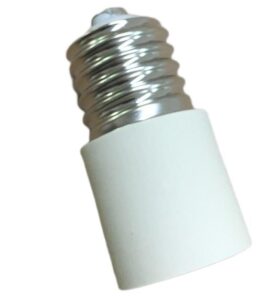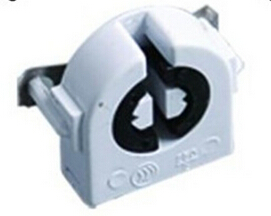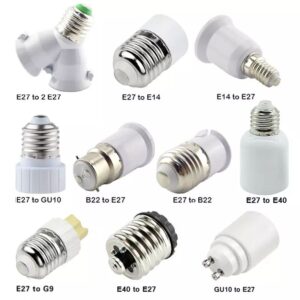Struggling with getting a light fixture loose can result in you getting frustrated, breaking the fixture, or getting hurt. Fortunately, there are several ways to safely and effectively get your light fixture loose.
To loosen a tight light fixture, turn off the power, wear gloves for grip, and use tools like pliers or a wrench to carefully unscrew the fixture. Lubricants can help with stuck parts.
Learn how to loosen stubborn light fixtures without breaking them or hurting yourself.

Safety First: Turn Off the Power
Before you do anything, your first step must be to turn off the electricity to the fixture you’re working on. This is non-negotiable when dealing with any kind of electrical work, as it ensures you avoid the risk of electric shock. Head to your breaker box and switch off the power to the circuit connected to the fixture. If you’re not sure which breaker controls the light, turn off the main breaker to cut all power to the house temporarily.
To confirm the power is completely off, use a voltage tester. This small, inexpensive tool can save you from serious accidents by ensuring there is no electricity running to the fixture before you begin. Safety is always the top priority, so double-check before moving on to the next steps.
Gather the Necessary Tools
The right tools can make a world of difference when loosening a tight light fixture. Before you start, gather the following:
- A pair of gloves (preferably rubber or with a non-slip surface for extra grip)
- Pliers or a wrench
- Screwdriver
- Lubricant spray (such as WD-40 or a silicone-based lubricant)
- A small step ladder or sturdy stool, if needed, to reach the fixture comfortably
Gloves will help protect your hands from sharp edges and give you better traction while loosening the fixture. Depending on the fixture, a screwdriver may be required to remove any screws holding it in place. For particularly tight fixtures, pliers or a wrench can help you apply extra torque without damaging the lamp socket. If rust or debris has made the fixture stubborn, a lubricant spray will assist in loosening those tough parts.

Apply Gentle Pressure When Loosening
Once you’ve confirmed the power is off and you have your tools ready, it’s time to begin loosening the fixture. Be patient and apply gentle pressure when attempting to unscrew the fixture. Overly aggressive force can cause the fixture to break, strip the screws, or even damage the light bulb socket.
If the fixture seems jammed, start by twisting it manually. Rotate it counterclockwise, which is the standard direction for unscrewing most light fixtures. If the fixture won’t budge by hand, use your pliers or wrench to give it a bit more leverage. Be sure to grip it securely but gently enough to avoid damage.
A steady, even force is often the best approach to prevent mishaps. Jerky or abrupt movements might break delicate components, so move slowly and methodically.
Use Lubricants for Stuck Fixtures
If the light fixture has been in place for a long time, rust, dirt, or grime might have accumulated around the screws or threads, causing it to stick. This is a common issue in humid environments like bathrooms or kitchens. To tackle this, you can apply a lubricant spray to the fixture’s threads or joints.
Spray a small amount of lubricant around the stuck parts, such as screws or the base of the fixture. Let the lubricant sit for a few minutes to penetrate the stuck areas before you attempt to unscrew the fixture again. Make sure to clean off any excess lubricant with a cloth to prevent drips from staining nearby surfaces.
Be mindful not to overdo it. A little lubricant goes a long way, and too much could create a slippery mess or even damage electrical components. Once the lubricant has done its job, try loosening the fixture again using gentle pressure.

Check for Hidden Screws or Clips
In some cases, the tightness isn’t just from rust or debris—it could be that hidden screws or clips are holding the fixture in place. Many light fixtures have hidden fasteners that are not immediately visible, especially ceiling-mounted or recessed lights. If the fixture feels impossibly tight, check the light base, backplate, or around the edges to see if there are any screws or clips securing it.
Use your screwdriver to remove these fasteners, and be careful not to strip the screws, especially if they are old or rusted. Once you’ve removed any visible fasteners, gently wiggle the fixture to see if it loosens. In some cases, you might need to use a small flathead screwdriver to pry loose clips.
Taking the time to check for these hidden elements can save you from the frustration of trying to twist off a fixture that’s still firmly secured.
Support the Fixture as You Loosen It
If you’re working with a larger or ceiling-mounted light fixture, it’s important to support the fixture as you work to prevent it from falling once it becomes loose. Ceiling lights, in particular, can be heavy, and if they fall, they may break or cause injury.
If possible, have someone help you by holding the fixture while you work to loosen it. If you’re working alone, use one hand to support the fixture while loosening it with the other. For particularly large or heavy fixtures, consider using a step ladder to get closer and gain better leverage.
By supporting the fixture properly, you reduce the risk of dropping and damaging it or causing injury to yourself.

What to Do if the Fixture is Still Stuck
Sometimes, even after following all these steps, a fixture might remain stubbornly stuck. This can happen due to rust, corrosion, or years of neglect. In these cases, forcing the fixture could lead to damage or even injury.
If the fixture still won’t loosen after applying lubricant and using tools, it may be time to consider calling in a professional. An electrician or handyman can help safely remove the fixture, especially if there are underlying issues such as corrosion that require specialized tools or techniques. For fixtures that haven’t been moved in years, professional help is the safest route to avoid damaging your light fixture or the surrounding area.
Final Words
By following these steps, you can safely and effectively get a light fixture loose without breaking it or hurting yourself. Remember, patience is the key. If you can’t get it loose, there is always the option to call a professional.













